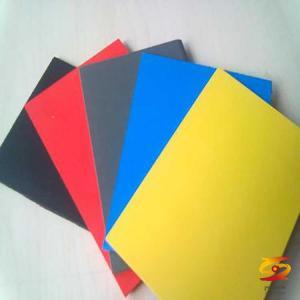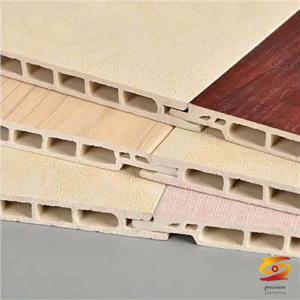How to properly clean and change the color and material of plastic extruder
How to properly clean and change the color and material of plastic extruderUsing fire or roasting to remove the plastic fixed on the screw is a common and effective method for plastic processing units, but acetylene flame cannot be used to clean the screw. The temperature of the acetylene flame can reach 3000°C. Cleaning the screw with acetylene flame will not only destroy the metal characteristics of the screw, but also significantly affect the mechanical tolerance of the screw. If the flame of the acetylene flame turns to a persistent blue color when baking a certain part of the screw, it means that the metal structure of this part of the screw has changed, which will lead to a decrease in the wear resistance of this part, and even the anti-wear layer and substrate Metal stripping. In addition, the local heating of the acetylene flame will also cause overheating of the screw side, which will cause the screw to bend. Most screws are made of 4140HT steel, and the tolerances are very tight, generally within 0.03mm. The straightness of the screw is mostly within 0.01mm. After the screw is baked and cooled by the acetylene flame, it is usually difficult to return to the original straightness. The correct and effective method: use a blowtorch to clean immediately after the screw is used. Because the screw has heat during processing, the heat distribution of the screw is still uniform.
Choose the right cleaner
Today, with a highly developed commodity economy, there are many different types of screw cleaners (screw cleaners) on the market, most of which are expensive, and the results vary. Whether to use commercial cleaners depends on different manufacturers and production conditions; plastic processing enterprises can also use different resins as screw cleaning materials according to their own production conditions, which can save a lot of expenses for the unit.
Choose the right cleaning method
The step of cleaning the screw is to turn off the feeding insert, that is, to close the discharge port at the bottom of the hopper; then reduce the screw speed to 15-25r/min and maintain this speed until the melt flow at the front of the die stops flowing. The temperature of all heating zones of the barrel should be set at 200°C. Once the barrel reaches this temperature, cleaning begins immediately. Depending on the extrusion process (the die head may need to be removed to reduce the risk of excessive pressure at the front end of the extruder), it must be done by one person during cleaning: the operator observes the screw speed and torque from the control panel and observes the extrusion Pressure to ensure that the system pressure will not be too high. During the whole process, the screw speed should be kept within 20r/min. In the application of low-pressure die head, do not remove the die head for cleaning first. When the extrudate is completely converted from processing resin to cleaning resin, immediately shut down and remove the die, and then restart the screw (rotation speed is within 10r/min) to allow the residual cleaning resin to flow out.
Choose the right cleaning tool
The correct and appropriate tools and cleaning materials should include: 1, heat-resistant gloves, 2, goggles, 3, copper scrapers, 4, copper brushes, 5, copper wire mesh, 6, stearic acid, 7, electric drills, 8, machine Tube ruler, 9. Cotton cloth.
Once the cleaning resin has stopped extruding, the screw can be pulled out of the device. For the screw with cooling system, before starting the screw extraction device (this device may be attached to the gear box), first remove the hose line and rotary connection. Use the screw extraction device to push the screw forward to expose 4-5 screw blocks for cleaning. The cleaning resin on the screw can be cleaned with a copper scraper and copper brush. After the cleaning resin on the exposed screw is cleaned, the screw extraction device will advance 4-5 screw blocks forward and continue cleaning. After repeated so many times, most of the screws were pushed out of the barrel.
Once most of the cleaning resin is removed, sprinkle some stearic acid on the screw; then use a copper wire mesh to remove the remaining residue. After the entire screw is polished by the copper wire mesh, use a cotton cloth to wipe the next step. This is to ensure that the screw will not carry any contaminants during the next production. After the screw is completely cleaned, it can be set aside until the other tools are also completely cleaned. If the screw needs to be stored, apply a layer of grease to the surface to prevent rust.
To clean the screw, do not use steel tools, such as a steel screwdriver, scraper, or pry bar to remove the plastic stuck to the screw, because steel will damage the surface of the screw and barrel.
How to properly clean the barrel
It is much easier and easier to clean the barrel than the screw, but it is also very important.
1) When preparing to clean the barrel, the barrel temperature is also set at 200°C.
2) Screw the round steel brush to the drill rod and the electric drill to form a cleaning tool, and then wrap the steel brush with copper wire mesh.
3) Before inserting the cleaning tool into the barrel, sprinkle some stearic acid into the barrel, or sprinkle the stearic acid on the copper wire mesh of the cleaning tool;
4) After the copper wire mesh enters the barrel, the electric drill is started to rotate, and at the same time, it is artificially moved back and forth until this back and forth movement becomes no resistance;
5) After the copper wire mesh is removed from the barrel, use a bunch of cotton cloth to wipe back and forth in the barrel to remove any cleaning resin or stearic acid residues; after several such wipes back and forth, the cleaning of the barrel is done. The thoroughly cleaned screw and barrel can be assembled at any time for the next production!!
Precautions for cleaning color change, material change screw and mold
With the diversity and diversification of products, the colors of products become more and more abundant. The conversion between different materials and the conversion between different colors cause a long conversion time and a lot of waste products, which cause a lot of confusion to production management and operation. Several ideas for your reference, please correct me.
1. First clean the outside and then the inside of the equipment. Before changing between different materials and changing colors, the original raw materials must be cleaned without dead corners, especially those that are not easy to clean. No dead ends. . The residual materials in the screw and the barrel must be squeezed out and emptied first. For complex equipment and molds, they must be removed and cleaned if necessary.
2. If the cleaning agent is put into cleaning after cleaning, if the machine is not heated and the material to be produced is extruded, see the appearance of the extruded product, and the normal color can be put into normal production. If not, proceed according to 1 above.
3. Several small experiences for reference
A. If different materials and color production are changed frequently, one set of the same mold can be configured. The mold is difficult to clean, which can save time and materials.
B. For different colors of the same material, it can be transformed at the feeding port, and the color masterbatch should be used for production. It is not advisable to use toner to add production. Can reduce the impact of different links on color.
C. Co-extrusion can be used to change the appearance color of the product, which can also reduce the trouble of conversion.
D. For the conversion between materials, if possible, products and equipment that produce the same series of materials should be used, that is, PP pipe equipment, try to make other products of PP materials, and do not make PE products. Otherwise, if not clean, it will affect the performance of the product.
If you want to know more about it please do not hesitate to
contact me. WhatsApp:+86-15966835076.








